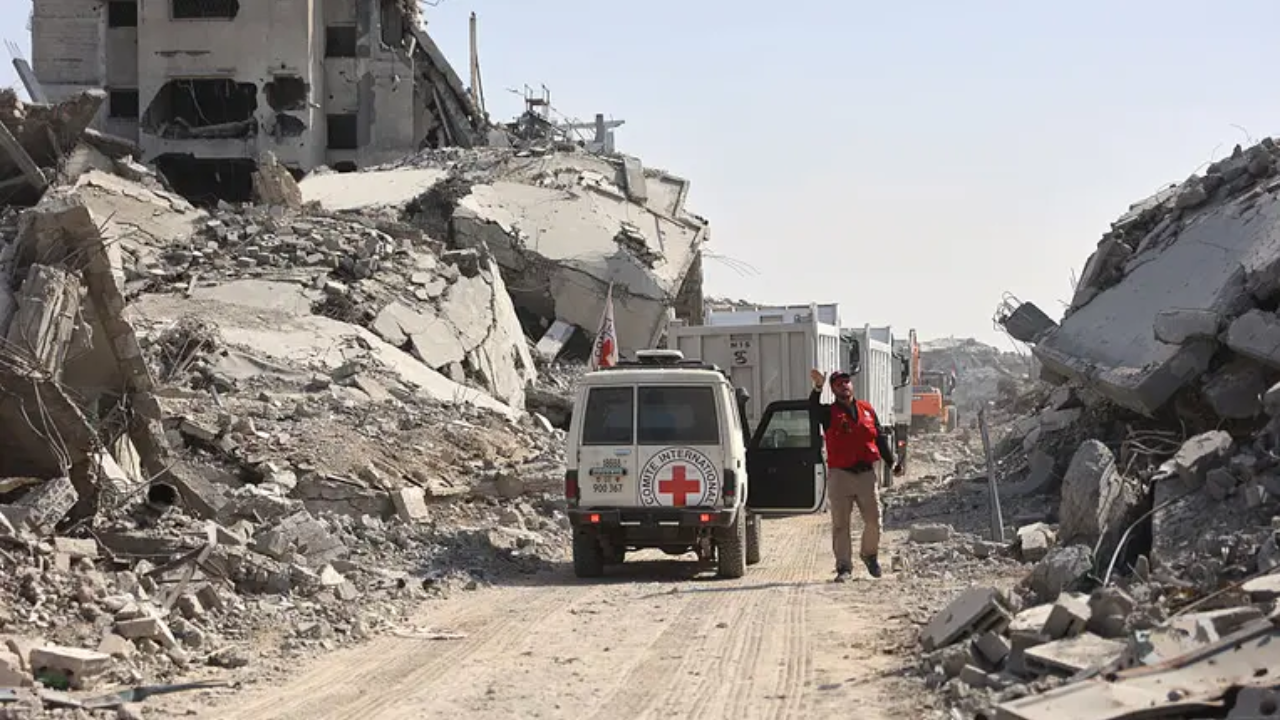Tensions remain high in the Middle East as Hamas handed over the bodies of three Israeli hostages on Sunday — a somber step in the ongoing ceasefire process mediated by the United States. The exchange, carried out via the International Committee of the Red Cross, comes amid renewed accusations from both sides of violating the truce that has paused two years of fighting in Gaza.
Hostages Returned Under Red Cross Supervision
Israeli officials confirmed that Prime Minister Benjamin Netanyahu’s office received three coffins bearing the remains of hostages from Hamas. The bodies were transferred through Red Cross channels and will undergo formal identification in Israel.
The three are believed to be among 11 deceased hostages Israel has demanded back under the terms of the current ceasefire, which began on October 10. Israeli authorities have criticized Hamas for delays, while the militant group says it is struggling to recover all remains amid the devastation in Gaza.
“This should have been completed earlier, but we are working under extremely difficult conditions,” said Ismail Al-Thawabta, director of Hamas’ media office in Gaza.
Violence Persists Despite Truce
While the ceasefire has significantly reduced fighting, violence has not completely stopped. Earlier Sunday, an Israeli airstrike killed one man in northern Gaza near the Shejaia vegetable market, according to Al-Ahli Arab Hospital.
“There are still Hamas pockets in Gaza,” Netanyahu said during a televised cabinet meeting. “We are systematically eliminating them.”
In response, Hamas accused Israel of repeated violations of the truce, claiming its own forces have adhered to the agreement.
Terms of the Ceasefire
The truce, brokered by the U.S., has allowed limited aid into Gaza and enabled hundreds of thousands of displaced Palestinians to return to their damaged neighborhoods. Under its terms:
- Hamas released 20 living hostages in exchange for roughly 2,000 Palestinian detainees.
- The group also agreed to hand over the remains of 28 deceased hostages in return for the bodies of 360 Palestinian fighters killed during the conflict.
- Before Sunday’s exchange, Hamas had delivered 17 sets of remains.
Despite the partial progress, Palestinian health officials report that 236 people have been killed in Israeli strikes since the truce began — nearly half in a single retaliatory attack last week. Israel says three of its soldiers have died and that it continues to target armed militants who violate ceasefire terms.
U.S. Role and Next Steps
The U.S. Department of Defense confirmed that General Dan Caine, Chairman of the Joint Chiefs of Staff, met with Eyal Zamir, Israel’s military chief, over the weekend to discuss ceasefire enforcement. About 200 U.S. troops remain stationed in southern Israel to monitor the truce and assist with planning for a potential international stabilization force, part of the long-term framework outlined by President Donald Trump’s peace initiative.
However, progress on the next phase — including the disarmament of Hamas and Israel’s eventual withdrawal from Gaza — remains stalled.
Hamas leaders continue to accuse Washington of not doing enough to pressure Israel, while Netanyahu insists that every Israeli military action is reported to U.S. officials.
A Fragile Pause in a Long Conflict
For now, the ceasefire holds, though barely. While Sunday’s handover marks another small step toward fulfilling the agreement, both sides appear entrenched in distrust and political pressure.
As Gaza struggles to rebuild and families on both sides await word on missing loved ones, the hope for lasting peace remains distant — overshadowed by the fragile calm of an uneasy truce.



